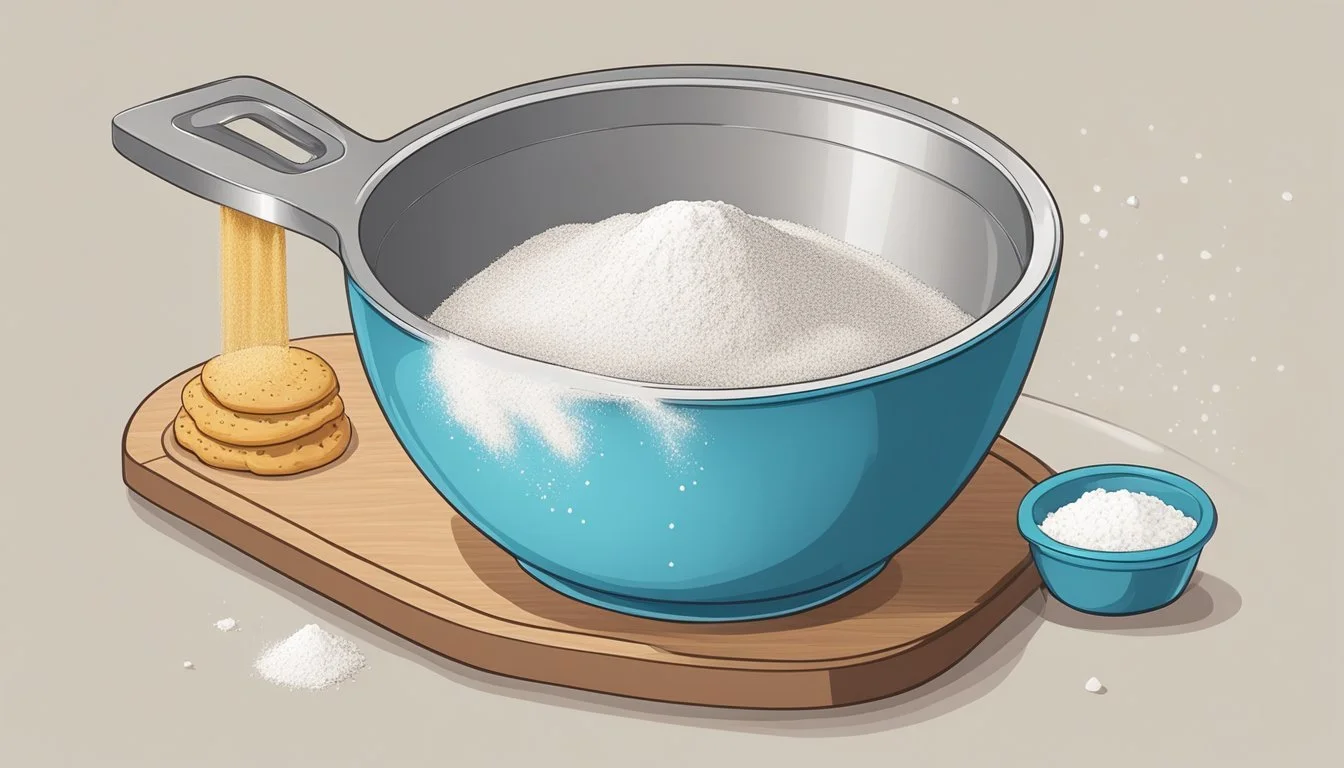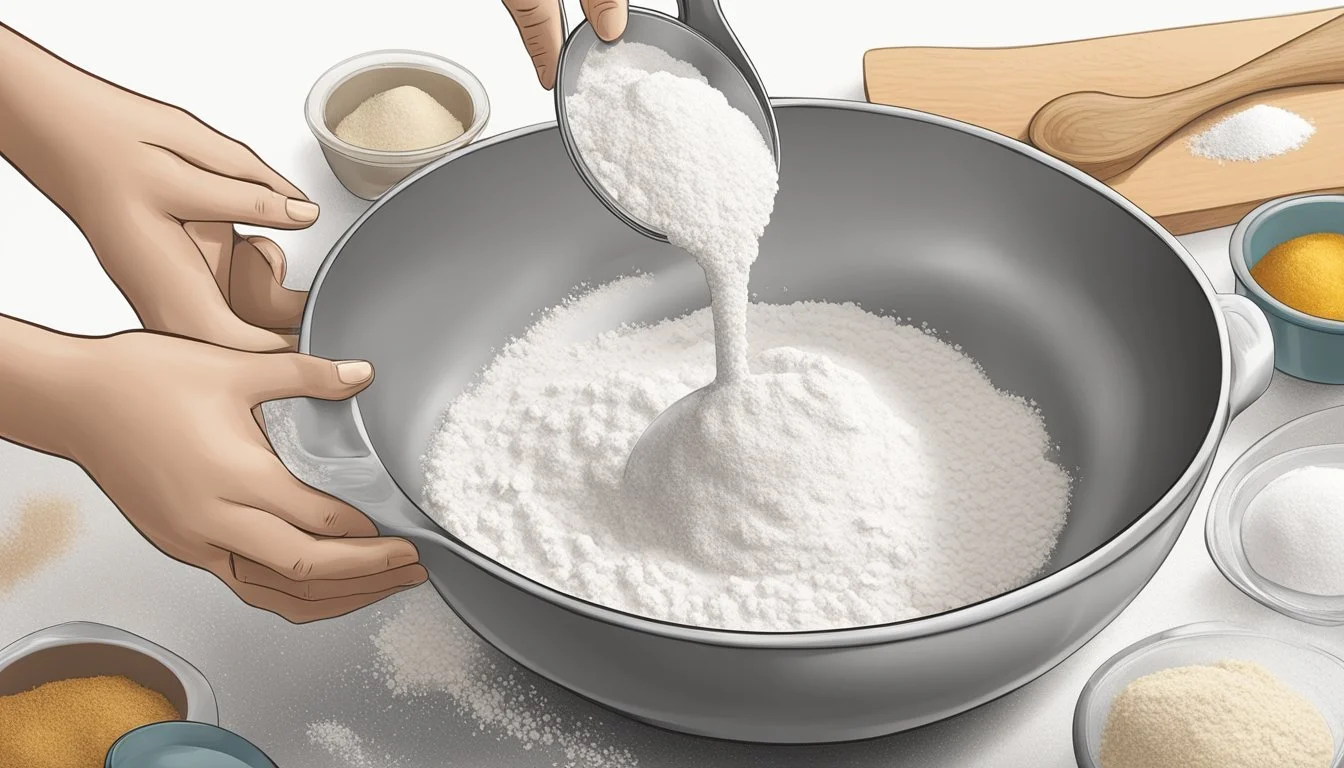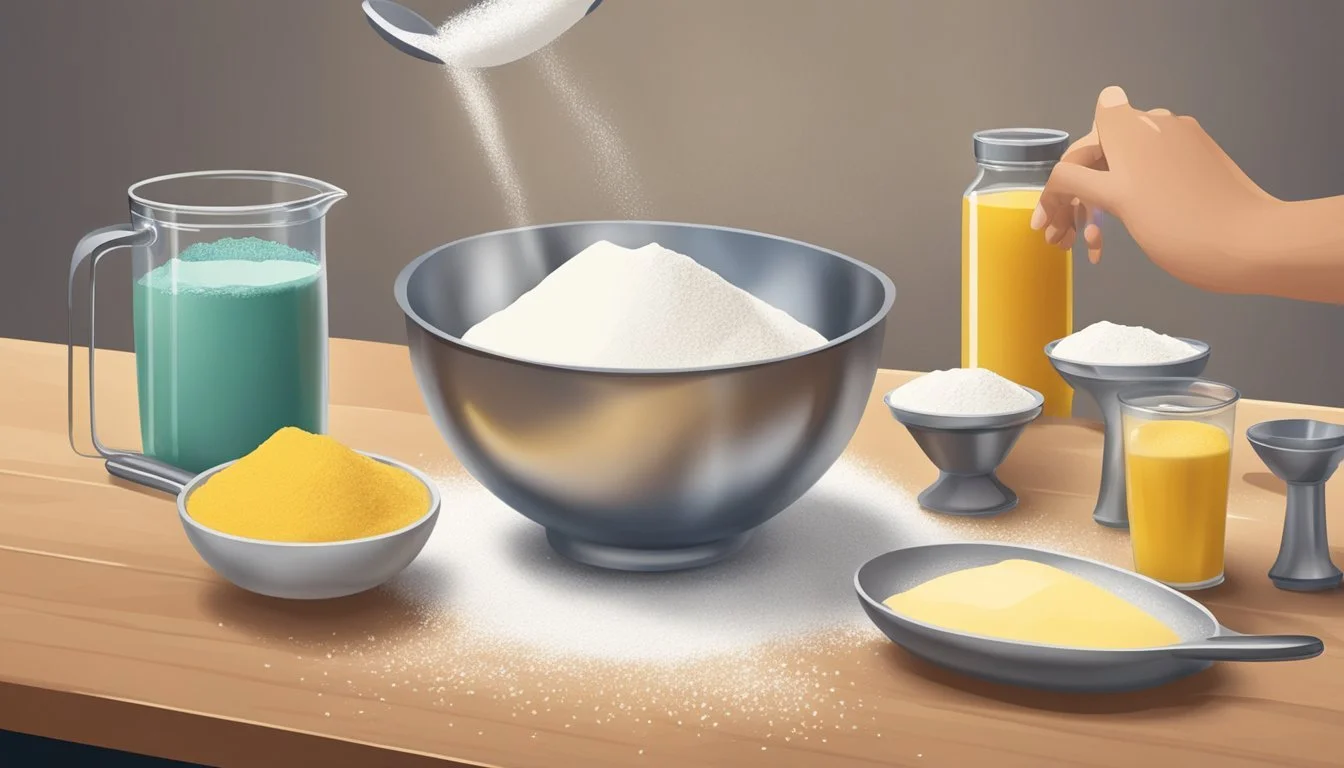How to Measure Ingredients for a Homemade Cookie Topping
Accurate Techniques for Perfect Sweetness
Measuring ingredients accurately is a cornerstone of successful baking, especially when crafting a homemade cookie topping. A topping, be it a streusel or crumb, not only adds texture but also complementary flavors to the cookies beneath. As such, precision in measuring ensures the right balance between sweetness, fat, and additional flavor agents like vanilla or cinnamon, creating an ideal harmony on the palate.
One begins with the selection of tools - measuring cups and spoons are crucial for dry ingredients, while liquid measuring cups will accurately gauge wet ingredients. For dry components such as flour, sugar, and leavening agents, the spoon and level method is recommended. This involves spooning the ingredient into the measuring cup or spoon and leveling it off with a straight-edge utensil for an exact measure, ensuring the topping’s texture is neither too dense nor too loose.
When incorporating fats, like butter, for a crumbly and buttery topping, it’s essential to use it at the right consistency. Softened butter will blend more easily with dry ingredients, helping to form the larger crumbles desired in a streusel topping. Precision in these steps sets the stage for a perfectly crisp and flavorful addition to homemade cookies.
Understanding the Basics of Baking
In baking, precision and understanding the interaction between ingredients are crucial for achieving the desired consistency and texture in baked goods.
Fundamentals of Baking and Its Science
Baking is a science that involves a series of chemical and physical transformations. As heat is applied to a mixture of ingredients, they react and change, forming a final product that is often significantly different from its parts. Key is the consistency which can affect both the texture and the taste of the baked goods. For instance, creaming butter and sugar correctly introduces air into the mixture, providing lift and a delicate texture to cookies.
Consistency: Achieved by precise measurement and following the recipe.
Texture: Developed through the proper mixing and handling of dough.
Types of Ingredients Used in Baking
Bakers commonly lean on ingredients such as flour, butter, and sugar to form the foundation of many recipes. Each plays a pivotal role:
Flour: The structure of baked goods. Different types of flour contribute to varying densities and textures.
All-purpose flour: Versatile for bread, cookies, and cakes.
Bread flour: High in protein, ideal for chewy bread.
Cake flour: Low protein, creates a tender crumb in cakes.
Butter: It adds moisture and richness while also affecting the texture. For a flaky pastry, cold butter is key, whereas room temperature butter is often used for creaming methods in cookies and cakes.
Sugar: Not just a sweetener, but a tenderizer and can also provide stability and structure, especially in meringues and whipped toppings. The granulated sugar commonly used in cookie recipes contributes to a crispier texture due to its ability to hold air when creamed with butter.
By understanding and accurately measuring these basic ingredients, bakers can ensure the success of their homemade cookie toppings or any baking venture.
Essential Baking Tools and Equipment
Accurate measurement and proper mixing are fundamental for creating delicious homemade cookie toppings. The tools one selects can greatly influence the final product’s consistency and flavor.
Measuring Instruments
Kitchen Scale: It offers the most accurate means to measure ingredients, ensuring each component is proportioned correctly for consistent results. It's especially crucial when precision is key, such as with the sugar to flour ratio in toppings.
Measuring Cups and Spoons: A set of measuring cups (1/4, 1/3, 1/2, and 1 cup) and spoons (1/4 tsp, 1/2 tsp, 1 tsp, and 1 tbsp) is indispensable. Dry and liquid ingredients should be measured with appropriate cups for accuracy.
Mixing and Baking Essentials
Mixing Bowl: A large, sturdy mixing bowl is essential, allowing for the thorough combining of ingredients without spillage.
Baking Pans and Sheets:
Type Use-case Baking Pan (8x8 inch) Smaller batches of cookie toppings Baking Sheets Evenly spreading toppings to cool or set
Oven: A reliable oven with precise temperature control is crucial as it affects how the cookie topping will bake, set, and ultimately taste.
Spoons and Spatulas: Ensure that they are of food-grade quality, perfect for folding in ingredients and distributing the topping evenly over the cookies.
Preparing Your Ingredients
The accuracy of measuring ingredients is crucial to the success of a homemade cookie topping. Ensuring that dry and liquid ingredients are measured with precision, and that add-ins and toppings are prepared properly, will result in a consistent and delicious final product.
Measuring Dry Ingredients Accurately
For dry ingredients such as all-purpose flour, granulated sugar, powdered sugar, salt, baking powder, and spices like cinnamon, it is essential to use the right measuring techniques:
Granulated Sugar & Brown Sugar: They should be packed into the measuring cup until it is full without any air pockets, and then leveled off with the flat edge of a knife.
Powdered Sugar: This ingredient should be fluffed up with a spoon before spooning it into the measuring cup and leveling it off without compacting, as it tends to settle and compact in storage.
All-Purpose Flour: The spoon and level method is recommended. Spoon flour into the measuring cup and scrape off the excess with the back of a knife for an accurate measure. Do not tap the cup or pack the flour down.
Spices: Small measuring spoons work best for measuring out spices. Fill the spoon with the spice and level it off.
Handling Liquid Ingredients Properly
Liquid ingredients, such as vanilla extract, should be measured in clear measuring cups designed for liquids to ensure accuracy. The cup should be set on a flat surface and filled to the appropriate mark at eye level.
Vanilla Extract: Use a measuring spoon, pouring in the extract until it reaches the rim.
Liquid Sweeteners: Such as honey, can be accurately measured by coating the measuring cup with a non-stick spray before adding the sweetener. This approach allows for easy release.
Preparing Add-ins and Toppings
Add-ins such as chocolate chips, nuts, pecans, and raisins, are often measured by volume but can be adjusted based on personal preference:
Chocolate Chips & Nuts: Use a dry measuring cup, filling and leveling off as you would with dry ingredients.
Raisins & Spices: In addition to volume measurement, they can also be weighed for accuracy, which is particularly useful when preparing large batches.
Toppings: If additional toppings or decorative elements are being used, prepare them ahead of time. For example, if nuts are to be toasted or spices pre-ground, do this before beginning to ensure they are ready to use when needed.
By following these guidelines for preparing ingredients, bakers can be confident in their ability to produce high-quality, consistent toppings for their homemade cookies.
Steps for Measuring Ingredients
Precise measurement is crucial for baking, as it ensures that the flavor and texture of your homemade cookie topping are consistently perfect. Here are the recommended steps to measure ingredients effectively.
Measuring by Volume
Dry Ingredients:
Use nesting cups for larger amounts; common sizes are 1 cup, 1/2 cup, 1/3 cup, and 1/4 cup.
For smaller measures, use nesting spoons that typically include tablespoons, teaspoons, 1/2 teaspoons, and 1/4 teaspoons.
To level off, pour or scoop the ingredient into the measure, then use the back of a knife or a straight-edged utensil, guiding it across the rim to remove the excess.
Liquid Ingredients:
Clear measuring cups with a pouring spout are preferred. The cup should be on a flat surface when you pour the liquid to eye level.
Measuring by Weight
Weighing ingredients is about precision. A digital kitchen scale can measure in grams or ounces, ensuring accuracy beyond what volume measures can provide.
To measure by weight, one must first place a bowl or container on the scale and zero it out. Then, ingredients are added until the desired weight is reached.
Ensuring Accuracy and Consistency
To ensure accuracy, one should always use the proper tools for measuring and check the recipe's specified units. A conversion chart can be beneficial when needing to switch between volume and weight measurements.
Regularly calibrate your scale and replace measuring tools if they become worn or inaccurate to maintain consistency.
By following these methods, one can measure ingredients with the confidence that their cookie toppings will turn out as intended every time.
Tips for Perfect Cookie Toppings
Crafting the ideal topping for homemade cookies involves careful consideration of texture and flavor, as well as an eye for decorative detail to enhance the final presentation.
Texture and Flavor Considerations
When selecting toppings for cookies, one must balance texture and flavor to complement the cookie's base. A variety of textures can be introduced to satisfy different preferences. For a soft bite, marshmallows or a glaze can be used. For a crunch, one might opt for chopped nuts such as walnuts or almonds. These additions not only contribute texture but also bring distinct flavors.
Soft Toppings: marshmallows, whipped cream
Crunchy Toppings: chopped nuts (walnuts, almonds), sprinkles
The size and shape of toppings should be considered to ensure an even distribution of texture and flavor in each bite. For example, coarsely chopped nuts provide a hearty crunch, while finely chopped nuts offer a more subtle texture.
Decorating and Presentation Tips
The presentation of cookie toppings should capture the eye and can reflect personal flair. Royal icing and melted chocolate are versatile for creating intricate designs or a glossy finish. They can be applied with precision using a piping bag for elaborate detail or drizzled for a more rustic charm.
Decorative Toppings: royal icing, melted chocolate, sprinkles
Application Methods: piping bags for detail, drizzle for simplicity
Uniformity in topping size achieves a professional look, and tools like a cookie scoop can help maintain consistency. To finalize the aesthetic, consider the color and sheen of toppings like sprinkles, which provide a playful pop, or a light dusting of powdered sugar for a delicate touch.
By minding these considerations, one can craft a topping that not only enhances the cookie's taste but also turns it into a visually appealing treat.
Storage and Handling
Proper storage and handling of ingredients and finished cookie toppings is crucial for maintaining their freshness and quality. It ensures that when one is ready to use them, they'll be at their best and safest for consumption.
Keeping Ingredients Fresh
One should store dry ingredients such as flour, sugar, and spices in airtight containers at room temperature to prevent exposure to moisture and air. This helps to retain the flavor and texture of these ingredients, ensuring they contribute fully to the quality of the cookie topping. For perishable items such as butter or cream, refrigeration is necessary.
Dry ingredients: Store in airtight containers in a cool, dry place.
Perishables: Refrigerate immediately; keep sealed.
Storing Cookie Toppings
After preparing cookie toppings, one might not use them immediately. To keep them fresh, one should store them in airtight containers. If the topping is a cream-based or has fresh ingredients, it should be stored in the refrigerator. For long-term storage, one can also freeze the toppings; however, it's important to note that the texture may change once thawed.
Refrigerate: Store in airtight containers; use within 5 days.
Freeze: Freeze for up to 3 months. Thaw in refrigerator.
Advanced Baking Techniques
In the realm of homemade cookie toppings, precision in technique can elevate the simplest of recipes. Advanced bakers understand that adjustments for altitude and exploration of unique ingredients can lead to remarkable and distinct results.
Adjusting Recipes for Altitude
When baking cookies at high altitudes, atmospheric pressure is lower and thus recipes must be adapted. For cookie toppings that require a consistent texture, adjustments are crucial.
Reduce baking powder: For each teaspoon, decrease by 1/8 to 1/4 teaspoon.
Increase liquid: Add 1 to 2 tablespoons of liquid per cup of dry ingredients.
Reduce sugar: Decrease sugar by 1 to 3 tablespoons per cup.
Oven temperature: Raise the temperature by 15 to 25 degrees Fahrenheit to set the structure of cookies faster.
Experimenting with Unique Ingredients
Cookie toppings benefit from the infusion of unique ingredients, lending them a distinctive quality.
Whole Wheat Flour: Replace half the all-purpose flour with whole wheat for a nuttier flavor and denser consistency.
Large Eggs: Use large eggs for more richness and better binding in toppings.
Sticky Ingredients: For sticky items like honey or syrups, coat the liquid measuring cups with non-stick spray to achieve an accurate measure without residue.
Sea Salt: Opt for finely ground sea salt over table salt to enhance flavor without overpowering the cookie.
Oats: Toast oats before adding to the topping to unlock a deeper flavor profile.
Chocolate Chips: Instead of regular chocolate, try chunks of high-quality chocolate for more complex flavors in chocolate chip cookie toppings.
Pairing these techniques with a confident knowledge of the basics can take your homemade cookie toppings from good to gourmet.
Troubleshooting Common Baking Issues
Mastering the art of baking requires attention to detail, especially when measuring ingredients for homemade cookie toppings. Ensuring precise measurements can prevent many common baking issues.
Dealing with Overflows and Misshapen Breads
Overflows:
Use the right size of baking container to prevent overflowing. Refer to the recipe's recommended container size.
Before baking, fill containers only halfway or two-thirds full to allow space for rising.
Shape consistency can be maintained by using parchment paper on a baking tray to prevent spreading.
If the dough is sticky, lightly dust your hands or the dough with flour.
For breads, use a sharp knife to score the top, helping control the expansion and shape.
Fixing Textural and Consistency Problems
Dry Dough:
Measure flour using dry measuring cups, leveling it off with a straight edge.
If dough is too dry, add a small amount of the wet ingredients until the desired consistency is reached.
Sticky Dough:
When dough is too sticky, gradually incorporate more flour until it's manageable.
It's crucial to handle the dough as little as possible to avoid warmth from hands making it stickier.
Consistency Issues:
If toppings aren't spreading evenly, use a spoon or a spatula to distribute.
For liquid toppings, measure wet ingredients in clear wet measuring cups for accuracy.
To reach the right consistency, add wet ingredients slowly and mix thoroughly.
Creative Baking Inspirations
When creating a homemade cookie topping, it's important to consider how global baking traditions and individual tastes can transform a simple recipe into something unique and delightful.
Exploring Global Baking Traditions
In the quest for a cookie topping that stands out, one should look to global baking traditions for inspiration. For example, the complex flavors of chai from India, which include cardamom and ginger, could infuse a simple caramel sauce with a warmth that complements the sweetness. Japanese matcha powder can add a subtle bitterness and vibrant green hue to royal icing, balancing out the sugar and providing a striking visual contrast.
Flavors to Consider from Around the World:
Italian Amaretto: Almond-flavored liquor that could enhance a simple chocolate chip cookie
Mexican Canela: Cinnamon with a milder, sweeter aroma perfect for spice mix-ins
French Fleur de Sel: Sea salt that could add a sophisticated edge to caramel sauce
Incorporating Personal Touches
Adding one's personal preference is key to devising a distinctive cookie topping. Whether it’s the creaminess of a homemade caramel sauce or the precision of piped royal icing, the choices a baker makes can reflect their personality. A baker might introduce a favorite nut for additional structure, such as pecans, or opt for an unexpected mix-in like popcorn for a delightful crunch. When it comes to chocolate chip cookies, swapping out the typical semi-sweet chips with chunks of dark chocolate or white chocolate can offer a simple yet effective twist.
Ideas for Personalisation:
Mix-Ins: Toasted coconut, dried berries, or even candied bacon
Structure: Chopped nuts for crunch or oatmeal for chewiness
Complementary Flavors: A dash of espresso powder to deepen chocolate richeness
By embracing the diverse palates of the world and the singular vision of the baker, one's own kitchen becomes a canvas for creative expression through flavors and textures.








